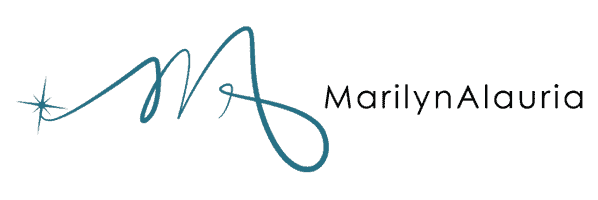One of the best methods for improving your quality of life is to detach yourself from outcomes so they don’t overwhelm you.
Certainty is comforting and becomes a fundamental focus in most people’s lives. The problem is, you can’t control everything. You can’t tell people what to think, what to do, how to handle X situation according to Y practice. Life tends to be more chaotic, yet free-flowing.
Some examples of attached outcomes could be:
- “I need to get into this specific college or I’m a failure”.
- Taking a soul-crushing yet lucrative job, because you’ll be “successful”.
- Letting your past actions and experiences dictate and limit your current and future self.
Nobody is perfect, so why beat yourself up because things didn’t go “exactly as you expected”?
A more constructive and supportive way of looking at things would be through the lens of:
- You learn from the past, but it doesn’t run your life.
- You plan for the future, but you have to build up to it.
Detachment is a great way to shed all the extra stress, pressure, and anxiety weighing you down, but like all good things you need a bit of moderation. Just because you can detach yourself from something doesn’t always mean you should.
There are such things as healthy and unhealthy detachments.
What is Considered Healthy Detachment?
Healthy detachment is the act of emotionally removing yourself from a person or situation without avoiding or ignoring either entirely. It’s impossible to control the outcome of a situation. Getting emotional does little to change things and generally only serves to escalate the conflict.
There’s a time and place for everything, detachment included. Some examples of healthy times to detach from a conflict or outcome are:
- Being open to constructive feedback.
- Understanding you may have a problem and genuinely listening to that third party.
- Understanding while something makes you angry, it’s best to apologize if you are wrong or unnecessarily escalated things.
Unhealthy detachment turns into unhealthy avoidance, such as:
- Ignoring constructive criticism.
- Avoiding interventions.
- Refusing to apologize for something that makes you angry.
What Is The Purpose Of Detachment?
Avoiding things entirely goes against the core purpose of detachment, reducing the stress and anxiety in your life while still engaging and making meaningful progress.
The best way to reconcile with your past and prepare yourself for the future is through detachment. A process and practice of embracing yourself individually so you can take responsibility for your life instead of waiting for someone else to intervene or instead of pushing all the blame off onto others wrongfully.
What Does Being Unattached To The Outcome Mean?
Allowing yourself to make mistakes, admit when you are wrong, accept the fact things will never be perfect, but still understanding you can make meaningful progress and take the steps to do so.
It’s hard to get mad at someone or something if you weren’t emotionally attached in the first place.
How Do You Detach Yourself From Outcomes?
Follow my step-by-step detachment process for beginners below.
Step 1: Step Back And Be Honest With Yourself
It’s impossible to make massive changes in your life if you aren’t willing to change yourself, and the best place to invest in is yourself, because you’ll never lose it.
The only way to start that amazing journey of detaching yourself from outcomes, things currently happening, and things to happen in the distant future is by being honest with yourself.
If you have a problem, and can’t even admit to yourself “yea, this is pretty bad. I need to do something about this”, then it’s going to be extremely difficult to improve yourself.
Step 2: Take A Moment To Recognize Your Attachments
Once you are in a place of comfort and trust, both physically and personally, we need to start identifying your attachments. It’s hard to change or remove something you can’t see.
Take a quick audit of your life. Has something been nagging at you this week? Is there something that happened years ago still haunts you? Do you have something coming up that’s got you sweating bullets?
Write them down, that’ll help you not only keep track of things but actively visualize them. An important part later on.
Step 3: Surrender The Attachment
Our second most important step is actually relieving ourselves of our current, and previous attachments. This can be done, with the help of your visualization, but “cutting” the emotional load that’s weighing you down.
This process is very similar to a cord-cutting ritual.
Be careful not to overdo it in your first session. If you haven’t done this before it’s best to start off with one or two, then work your way up as you become more comfortable and confident with this process.
Step 4: Be Patient With Yourself
Nobody is perfect, especially when they just started something new. Cut yourself some slack and understand this is a process.
Just like working out, you may feel better but not “see” any tangible improvements immediately, but they will come. You just have to stick with it, be persistent, and be consistent in your practice of detachment. This is the most important step.
Including when something sets you back, we all hate to admit it but these things happen and seemingly out of nowhere. Let’s go over a handful of common setbacks you should look out for.
Common Setbacks To Practicing Detachment
Setbacks are life’s way of challenging you, they’re neither good nor bad by nature. It’s life’s way of helping you become the best version of yourself.
Some of the biggest problems people face while practicing detachment are:
- Overly detaching from things, turning to avoidance instead.
- Not being fair to yourself, especially in the beginning.
- Failing to be consistent.
If you want to hear some of my stories about having setbacks, detaching, working on myself and then growing, check out my podcast, Who Can It Be Now, episode 29 – Tools, Tools and more tools.







